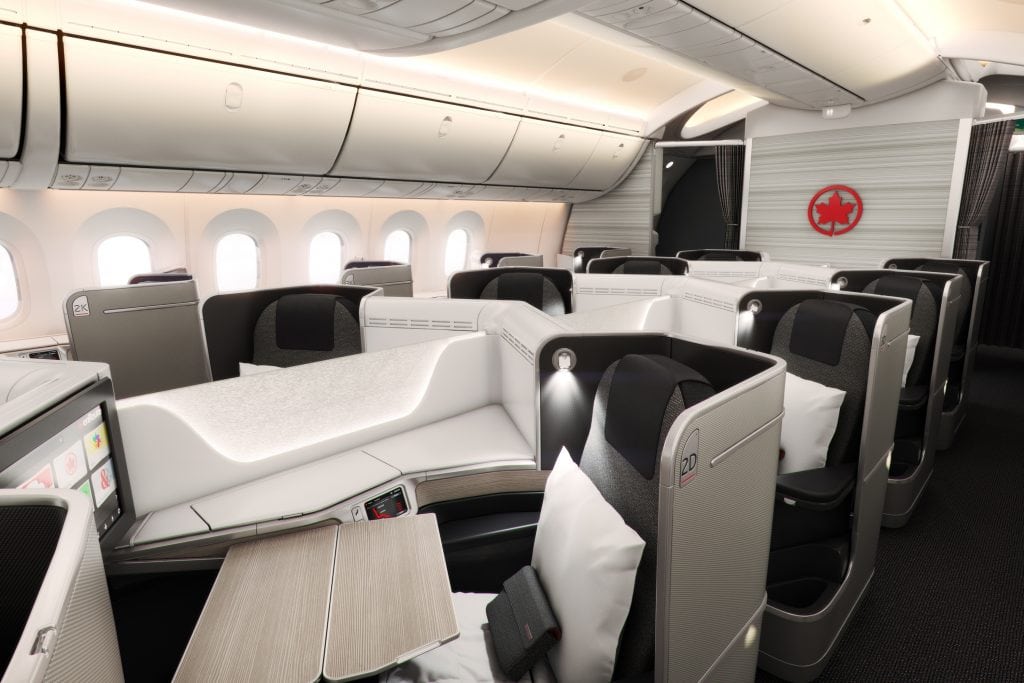Skift Take
New technologies, practices, and vendors are emerging to help airlines distribute their airfares. The new landscape is complex. But Air Canada's latest effort reveals at least one part of the emerging picture.
The airline industry has talked a lot about how it can use new distribution capabilities to embrace novel ways of retailing airfares to corporate and leisure travelers.
But airlines and travel agencies have only begun to process transactions via the new ways. The shape of the future is unclear.
For a glimpse at what may come, look to Air Canada, which this week processed its first transaction via a new platform called NDC Exchange. Before explaining what that is and its significance, let’s set the scene.
For several years now, Air Canada has offered internet-based connections for online travel agencies and travel management companies to access its airfares. These worked outside of the incumbent three giants of travel distribution, Amadeus, Sabre, and Travelport.
About 40 to 50 agencies access Air Canada’s application programming interfaces, or APIs, to process about a million tickets a year via direct connections that avoid the intermediaries. This year, Air Canada will generate approximately $600 million in revenue via these APIs.
That’s still a minority of Air Canada’s overall distribution mix, which mostly goes through the global distribution systems. But it avoids the fees those middlemen charge and it enables the airline to have enhanced control over how the content appears on travel agency reservation systems to make sure they’re presenting their full-service products in the best way and not encouraging customers to shop by lowest price.
In recent years, Air Canada and other airline industry players have gradually adopted new technical standards for their APIs that have been championed by the International Air Transport Association.
These so-called New Distribution Capability standards have been evolving at a rapid clip — too fast for everyone to keep up, with at least two versions released a year. That means that some travel agencies are still using a standard issued in 2016, others on one issued in 2017, and others on the latest version.
Suddenly, maintaining the internet-based connections has become a headache.
Keith Wallis, Air Canada’s director of global product distribution, said, “The differences between the standard versions are pretty significant, and it takes a pretty big effort for an airline to maintain web services across all different versions. You eventually have to decide either not to maintain old versions, which means forgoing work with some sellers, or you can invest a ton of money, time, and resources.”
Data Transformer
Last week, Air Canada was the first airline to announce it was adopting a new, third way.
It began using NDC Exchange, a platform that does the work on Air Canada’s behalf to transform data from its web services into a way that’s readable by sellers using any of the different versions of New Distribution Capability.
Think of it like a voltage converter you might use to connect your electric devices to the electricity grid in a foreign country.
NDC Exchange was created by airfare filing clearinghouse ATPCO [Airline Tariff Publishing Co.] and SITA, a Geneva-based technology organization owned by the air transport industry that was originally Société Internationale de Télécommunications Aéronautiques.
Behind all those acronyms is the important fact that the airline industry has heavy control of both organizations, which may help keep costs below what they would probably have to pay third-party distribution giants to do the same work.
ATPCO said it expected nine airlines would be live by end of the year.
British Airways is close to going into production on NDC Exchange, too, a source told Skift, but an airline spokesperson couldn’t be reached on deadline and none of the companies involved would comment.
Wallis said, “My wish would be to put all of my partners in the NDC Exchange, though it would take more than a year to get there. It would make Air Canada’s life much simpler, as I essentially would have one connection to manage.”
“But over the long-term, I’m flexible in the vision, as much as I can be, because I loathe losing a chance to work with someone because they don’t want to connect through NDC Exchange,” Wallis said.
If the vision is mostly fulfilled, the NDC Exchange could take on a life of its own. It could become more than a mere data transformation tool that acts as an integration layer during a presumably temporary spike in updates to the New Distribution Capability standard.
“If I, at Air Canada, bring 40 or 50 partners I work with, and Airline X joins next and brings in, say, 20 partners they work with that may not have been interested in spending the time and money to access my APIs to connect with Air Canada but now all they have to do essentially is toggle a switch, then I may grow my overall business,” Wallis said.
“There is a nominal cost to use it for airlines and a nominal cost to use it for the sellers, but if the costs stay low and the system has low latency, then the value would be worthwhile,” Wallis said. ATPCO and SITA charge a monthly subscription fee based on transactions per second needed, essentially the computing capacity a provider needs. The idea is that you only pay what you use which makes it easy to try.
The platform could become more valuable if it effectively enabled the cross-selling of ancillary services between airlines. That is a capability ATPCO and SITA are striving for.
“Currently we have proof of concepts with some major carriers, focusing on seat selection as the ancillary,” said Graham Wareham, Director of Products & Solutions for ATPCO. “Carriers would show interest, come up with terms about how they’d sell, display, and settle content and then we would just create the infrastructure of communication.”
Latency, or making sure that results are accurate and quick, is a tough technical challenge to surmount. There’s a risk the exchange might gravitate toward lowest common denominator.
Wareham disagreed. “The system is engineered to scale for sure, and if a seller has an older or slow version it wouldn’t impact the others because everyone connects separately,” he said.
Changing Roles
For this platform, SITA is taking on the role of providing the IT networking for messaging and data services to power the exchange, while ATPCO transforms the data.
The NDC Exchange runs on SITA’s cloud-based infrastructure and airlines use its 24/7 call-center support to handle any troubleshooting.
As Skift noted in a deep dive, Channel Shock, the typical process has been for airlines like Air Canada to load fare data into a database maintained by ATPCO and load scheduling data into another system run by OAG.
Amadeus, Sabre, and Travelport then pull fare content from those databases, create offers, and display those offers in systems that travel agents can use to book tickets with confirmed seat availability.
The story gets more complicated, as it always does in airline distribution.
Last fall, Air Canada began to move from its decades-old, self-made reservation system to the Altéa Suite offered by Amadeus. It also renewed a multi-year distribution agreement with the company.
Amadeus’s Elena Avila, executive vice president, head of Americas, airlines, said, “Air Canada is a long-term partner that we’re thrilled to be working with both on the IT and the distribution side. The fully integrated IT and distribution benefits will support the airline’s strategy to deliver a more personalized travel experience across all touchpoints. And the combination of the Altéa suite and Amadeus Anytime Merchandising will equip Air Canada to address evolving industry initiatives, such as NDC.”
Adding to the complexity, in early August travel distribution giant Sabre announced “a commitment to advance at an industry level” new technological and business practice methods with American Airlines and several key players in corporate travel — American Express Global Business Travel, Carlson Wagonlit Travel, and Flight Centre Travel Group.
A Sabre spokesperson said in an interview, “Efforts like the one you highlighted [by ATPCO] are often focused only on offer creation, whereas Beyond NDC is focused on developing end-to-end solutions that let airlines retail, distribute and fulfill across the entire traveler journey. Likewise, we are partnering with agencies to develop solutions that offer the breadth of content they need while allowing them to fulfill and service without disrupting processes and procedures on their end.”
Similarly in August Amadeus announced an NDC-X program that’s working with Qantas and American Airlines and with travel sellers like Flight Centre, Travix, American Express Global Business Travel, Carlson Wagonlit Travel, and BCD Travel. For details, see our report on the Qantas work.
Avila said Amadeus’ NDC-X program “leverages the significant investment Amadeus has made in technology development, plus our global distribution leadership sets us apart. For NDC to truly take off, we need to create a real standard not only for the protocol itself, but also for the way it’s implemented.”
“We also need to ensure that it responds to travel seller requirements, such as servicing needs,” Avila said. “And of course, NDC needs to be supported by the right economics to drive investment and adoption across the industry.”

A Wave of New Players
NDC Exchange just works with data, and the data requires companies to make the rich content displayable on travel agency desktop screens, corporate booking tools, and online travel company consumer interfaces in a way that presents the data well and accurately.
The traditional masters of this task — Amadeus, Sabre, and Travelport — could choose to plug into it. But they might have to accept commercial terms that would be less lucrative than past arrangements. For more context, see our article Channel Shock.
ATPCO said they have had talks but none of the three have signed on yet.
“We see this project as an additive to industry efforts for simplifying the spaghetti of connectivity out there, but it’s non-competitive and non-threatening to what the GDSes [global distribution systems] are doing,” Wareham of ATPCO said.
In the meantime, other vendors have signed on.
Verteil Technologies, an Indian IT provider, will use the NDC Exchange to aggregate the New Distribution Capability content and then enable Indian travel agencies to issue standalone New Distribution Capability tickets. This spring Verteil began handling American Airlines’s and Lufthansa Airlines’ New Distribution Capability content via custom connections, said Verteil co-founder Ranjit Kurian.
Australia- and New Zealand-based corporate travel technology company Serko is plugging into NDC Exchange. The company claims that about half of Australasian organizations use its online booking tool, so the potential audience is large.
Other vendors launching on NDC Exchange include Airlines Reporting Corp., Innfinity and Atriis.
Some of the better-known players who have been working with New Distribution Capability from the start haven’t signed on yet, including Farelogix, which has built an airline commerce gateway that enables the airlines to create, control, optimize, and deliver their rich content via New Distribution Capability standards.
Although Farelogix is not participating, CEO Jim Davidson said in an interview that he congratulated the teams involved and said it was a win for the industry.
“Everyone is now circling around this common theme where airlines stay in control of manufacture and delivery of their offer,” Davidson said. “The focus is on the last mile — where there’s a lot of complexity — so the industry is finally addressing the right issues.”
The Daily Newsletter
Our daily coverage of the global travel industry. Written by editors and analysts from across Skift’s brands.
Have a confidential tip for Skift? Get in touch
Tags: air canada, amadeus, ATPCO, ctir, distribution, global distribution systems, iata, ndc, sabre, sita
Photo credit: The Air Canada Signature Class cabin on the 787 Dreamliner. This month Air Canada processed its first New Distribution Capability production transaction via NDC Exchange, a platform that simplifies the adoption of the International Air Transport Association’s standard. Air Canada
